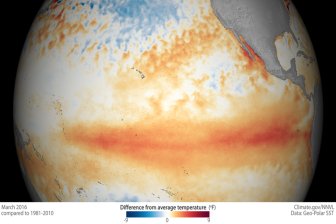A case of novel coronavirus was presumptively confirmed in Toronto on Jan. 25.

Here’s what we know so far:
What do we know so far about this case?
A man in his 50s travelled from Wuhan to Guangzhou, China before arriving in Toronto on Jan. 22. Public health officials say he became ill within a day and self-reported by having a family member call 911.
“The emergency service was aware of his travel history. They used full precautions,” said Dr. Barbare Yaffe of Toronto Public Health at a Saturday press conference.
At a press conference on Sunday, Canada’s Chief Public Health Officer confirmed the man was on board Southern China Airline’s flight CZ311 from Guangzhou to Toronto, and reported to local health officials that he had flu-like symptoms while on the plane.

Dr. Theresa Tam said plane contact-tracing is now underway and that officials are working “very rapidly” to notify anyone who was in close proximity to the patient. Toronto Public Health on Sunday also stressed that their staff is “actively following up with all of the people who were close contacts.”
The man was taken to Sunnybrook Hospital with fever and respiratory symptoms, and is currently in stable condition in a negative-pressure room, with staff taking precautions.
A test from the Public Health Ontario Laboratory confirmed the diagnosis. Toronto Public Health has been speaking with the man to determine exactly who he’s had contact with.
“The last word I heard was there was very little by way of contact,” says Dr. Eileen de Villa, the city’s medical officer of health.
She added that their understanding is that the man took “private transportation” home, not mass transportation.
“But we are absolutely making sure that we get the history of all the places the individual has been. That’s part of regular public health practice, in order that we can then determine who needs to be informed and what sorts of measures they need to take,” she said.
Yaffe says it’s important to keep the situation in context.
“The evidence to date is that this is not easily transmitted between people,” she says. Transmission, she said, is “mostly to very close household contacts.”
This man’s household contacts are a “very small number of people” who have already been put into self-isolation and are being monitored.

What does a presumptive confirmed or presumptive positive case mean?
The presumptive positive result comes from a local “rapid” test that gives health authorities a head-start on their work, according to Dr. Peter Donnelly from Public Health Ontario.
Public Health Ontario developed a “specific accurate and rapid test” for the novel coronavirus, he said. The National Microbiology Laboratory in Winnipeg also has a test, albeit slightly different.
The laboratories collaborate with each other, he explained.

“What we’ve agreed is that because we know our test is rapid and reliable, we can actually make a positive result from one of our tests actionable,” he said.
“So in other words, we don’t wait.”
The presumptive positive result becomes a confirmed case once the Winnipeg laboratory provides its result.
The risk is ‘still low’
Despite the first presumptive case, federal health officials on Sunday stressed that the risk to Canadians remains low.
Dr. David Williams, chief medical officer for Ontario, said health officials “hoped” the system in place to contain the virus would work.
“And it did,” he said.
Ontario Health Minister Christine Elliott says the province has been “actively monitoring” to swiftly detect any potential cases and contain them.
“I want to assure all Ontarians that this is exactly what transpired,” she said.
She stressed that the patient was detected and “immediately put in isolation,” with lab tests ordered and Toronto Public Health launching “extensive case and contact management” to prevent any further spread.
“The system is working,” Elliott said. “These protocols and procedures have been in place for some time.
“To be clear, health officials are actively working to ensure that we identify everyone this person was in contact with in order to contain this virus.”
Tam said person-to-person spread of the virus has been reported in close-contact only.
“Any imported cases we will be rapidly preventing any further spread from that case,” she said, adding that Canadians should take “regular” precautions to protect themselves against respiratory illnesses.

What can people do?
Here’s the advice on how to protect yourself that Ontario has put out via a webpage that will be updated every weekday:
Provincial health officials say that reducing exposure and transmission to a number of illnesses, including coronaviruses, can be done by:
- washing hands often
- avoiding contact with people who are unwell
- practicing proper cough and sneeze etiquette
The province also says that anyone travelling to an area with known cases of coronavirus should avoid the following:
- high-risk areas such as farms, live animal markets and areas where animals may be slaughtered
- contact with animals (alive or dead), including pigs, chickens, ducks and wild birds
- surfaces with animal secretions or feces
Federal health officials echo similar advice, with Minister Hadju reminding those who have travelled to an affected area of China and subsequently developed flu-like symptoms to reach out to their health care professional.
On Sunday, Toronto Public Health noted that some hospitals have told them people are showing up to emergency rooms without any symptoms.
“TPH has heard from local hospital partners that people are presenting to their emergency departments without signs of illness,” Dr. de Villa said in a statement on Sunday.
“While we appreciate that people may have concerns, and that people may worry about their health, we encourage people who were on this flight and who do not have signs of illness to continue with their routine activities and we ask that these people do not present to the health care system.”
Can we expect more cases?
Possibly. Provincial and federal health officials have indicated they would not be surprised to see more confirmed cases.
During the press conference on Sunday, Tam said the presumptive case in Toronto was “not unexpected” and that additional cases could occur in the near future.
Williams said that Ontario had been waiting for its first case.
“I would think with the amount of flow and traffic and stuff, we might see some others,” he said. Health officials remain vigilant in their monitoring, he added.

“I would be very surprised if this is our last case,” Williams said. “But we have to wait to see.”
In a tweet Saturday evening, Dr. Tam from the Public Health Agency of Canada said: “While additional confirmed #2019nCoV cases would not be unexpected, the risk of an outbreak in Canada remains low.”
As of Saturday, the World Health Organization said there were 23 confirmed cases outside of China, with 21 of them having travel history to Wuhan City.
The international organization has not changed its risk assessment of the situation since Jan. 22, deeming it “very high in China, high at the regional level and moderate at the global level.”
More than 2,000 people globally have been infected with the new coronavirus, the vast majority of them in China, where 56 people have died from the disease and 1,975 are confirmed cases, according to figures released on Sunday.
The virus is believed to have originated late last year in a seafood market in the central Chinese city of Wuhan that was illegally selling wildlife. It has spread to Chinese cities including Beijing and Shanghai, as well as the United States, Thailand, South Korea, Japan, Australia, France, and now Canada.
— With files from Global News’ Hannah Jackson and Reuters





Comments